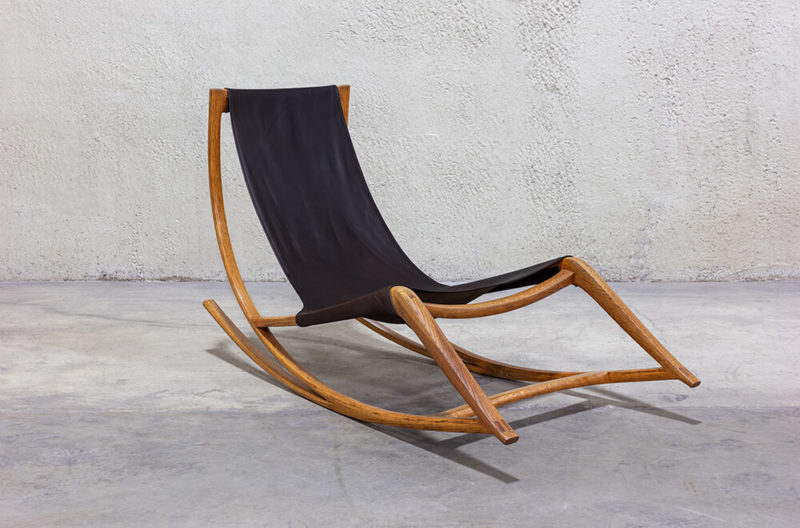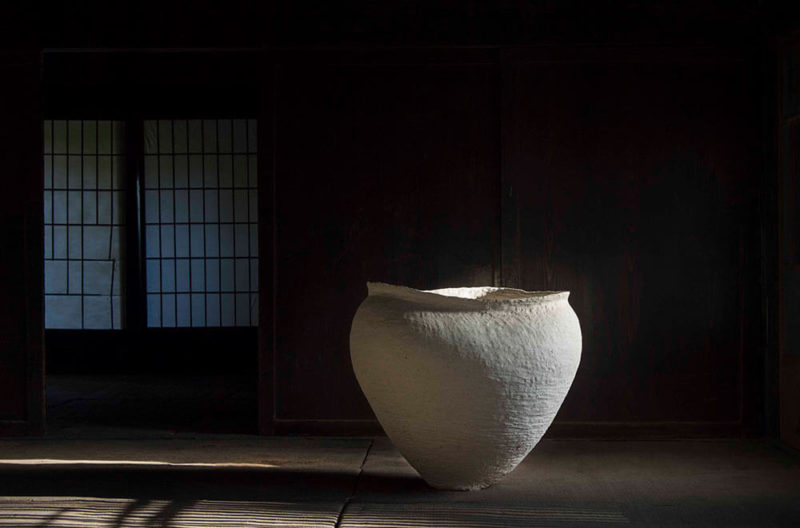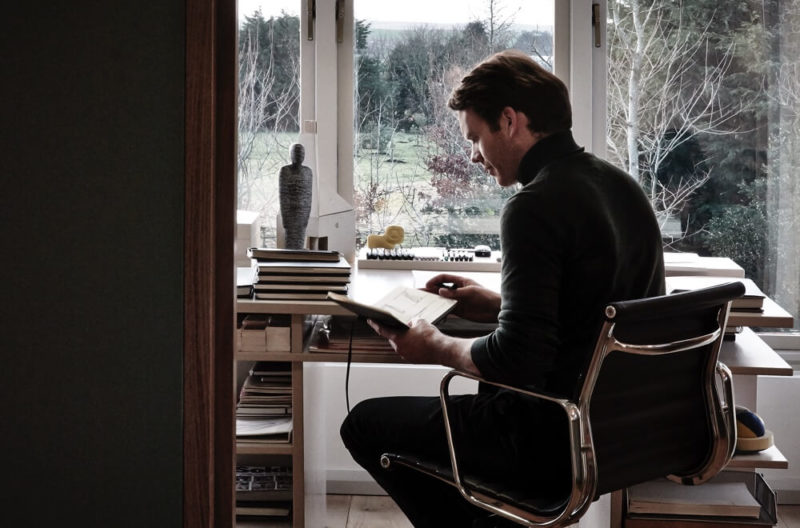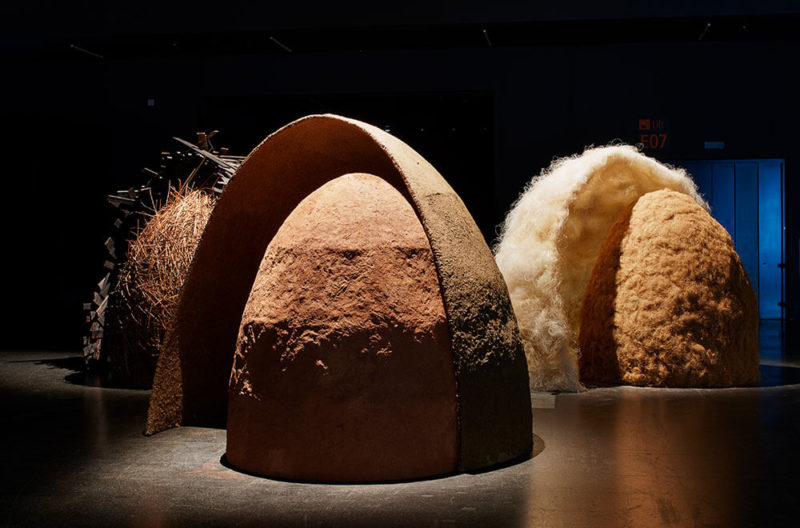10 Objects from Design Miami/Basel
TDE's curation.
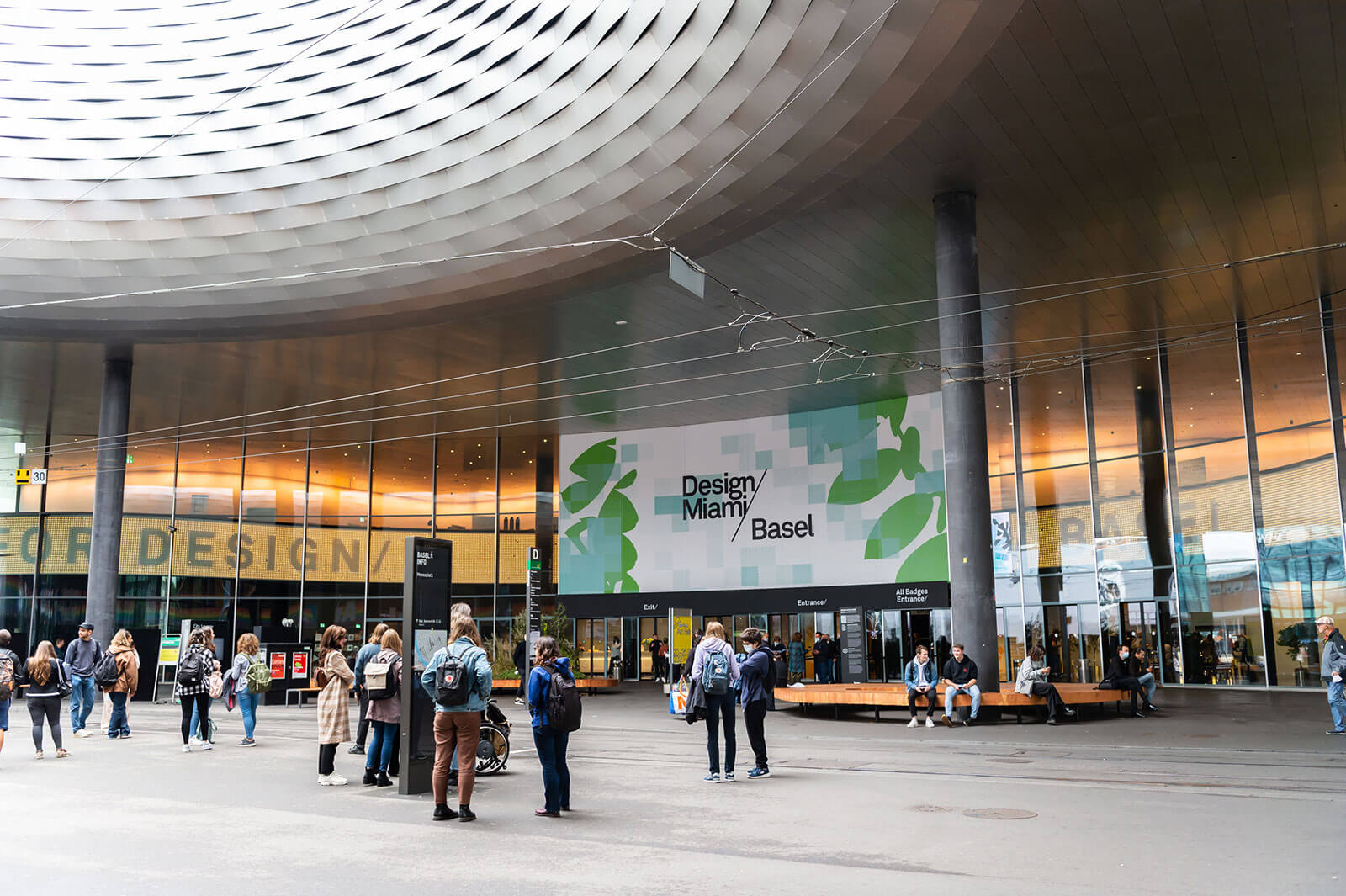
Design Miami/Basel 2021
COURTESY: WorldRedEye.com
Invited to curate a virtual 3D tour of Design Miami/Basel, Emma Crichton-Miller, Editor-in-Chief of The Design Edit, selected these ten objects, titling her tour ‘From the Austere to the Flamboyant’.
The to and fro of austerity and flamboyance in design is a perpetual rhythm, varying from era to era. Sometimes the two tendencies are diametrically opposed; sometimes they are encapsulated in a single piece. While Jean Prouvé represents one extreme end of the pendulum’s swing, the contemporary designer Joseph Walsh perhaps represents the other, while near-contemporaries Joaquim Tenreiro and Carlo Mollino represent critical pivot points of sensibility. Wendell Castle’s ‘Desk of Doctor Caligari’s Mistress’ is playfully and theatrically over the top, while the ‘Grande Table Pliable’ by Bernard Dubois and Isaac Reina, in its subtle luxuriousness, offers a more restrained, intellectual thrill. For those who missed the event itself, you can still experience the virtual 3-D tour on the Design Miami/ website.
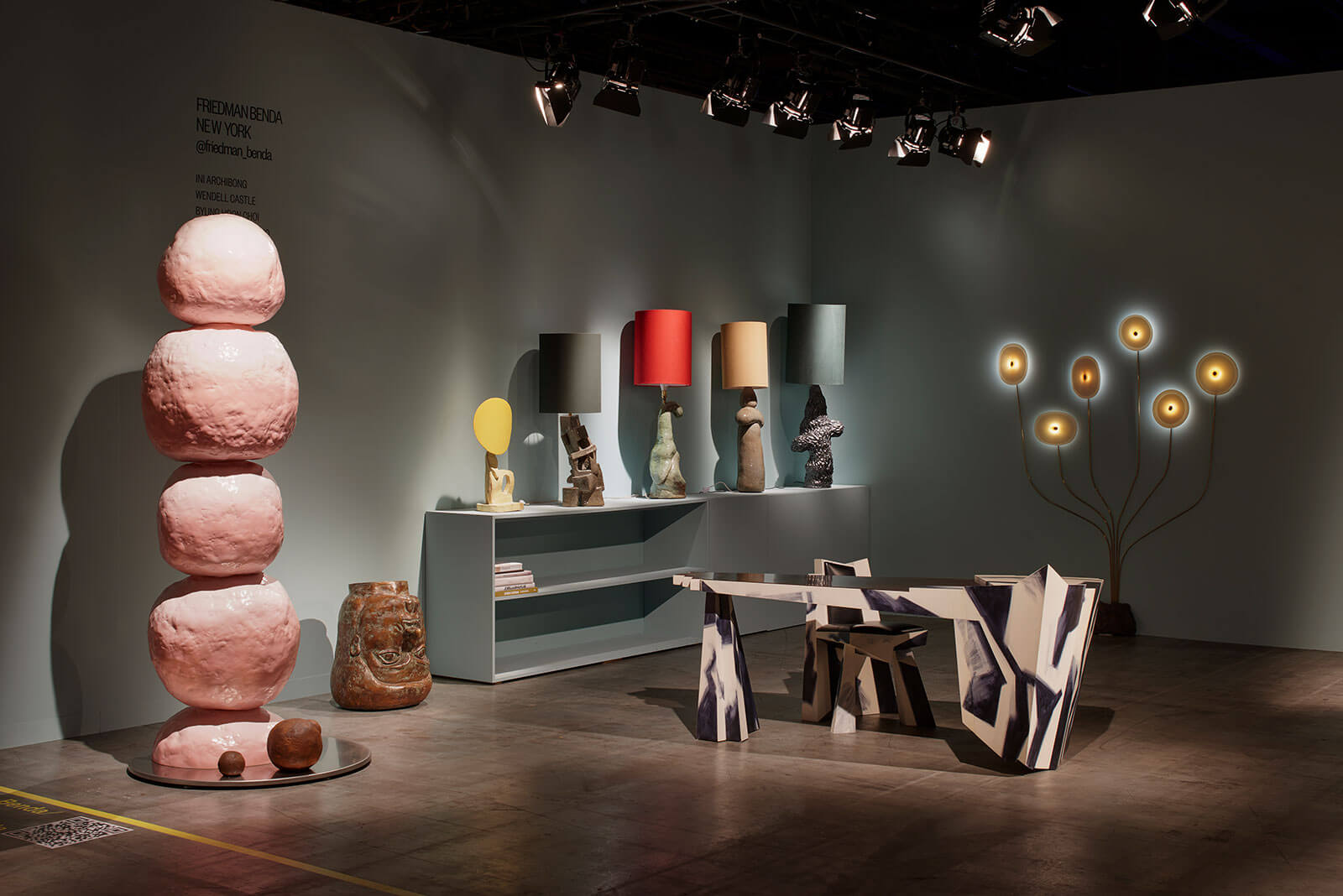
Friedman Benda at Design Miami/Basel 2021
COURTESY: Friedman Benda / PHOTOGRAPH: James Harris
1. Jean Prouvé, ‘Demountable Guéridon Cafétéria’, 1950
A giant of French mid-century modernism, Jean Prouvé married functional analysis with an exacting sensibility. This café table and chair, designed for a university student cafeteria, is part of Prouvé’s long exploration of demountable or ‘flat-pack’ furniture. Made with the industrial materials of bent sheet steel and aluminum, alongside wood, with a practical, vinyl protective surface to the table top, the sophisticated colours – green, purple, steel, wood – make these objects of high aesthetic quality.
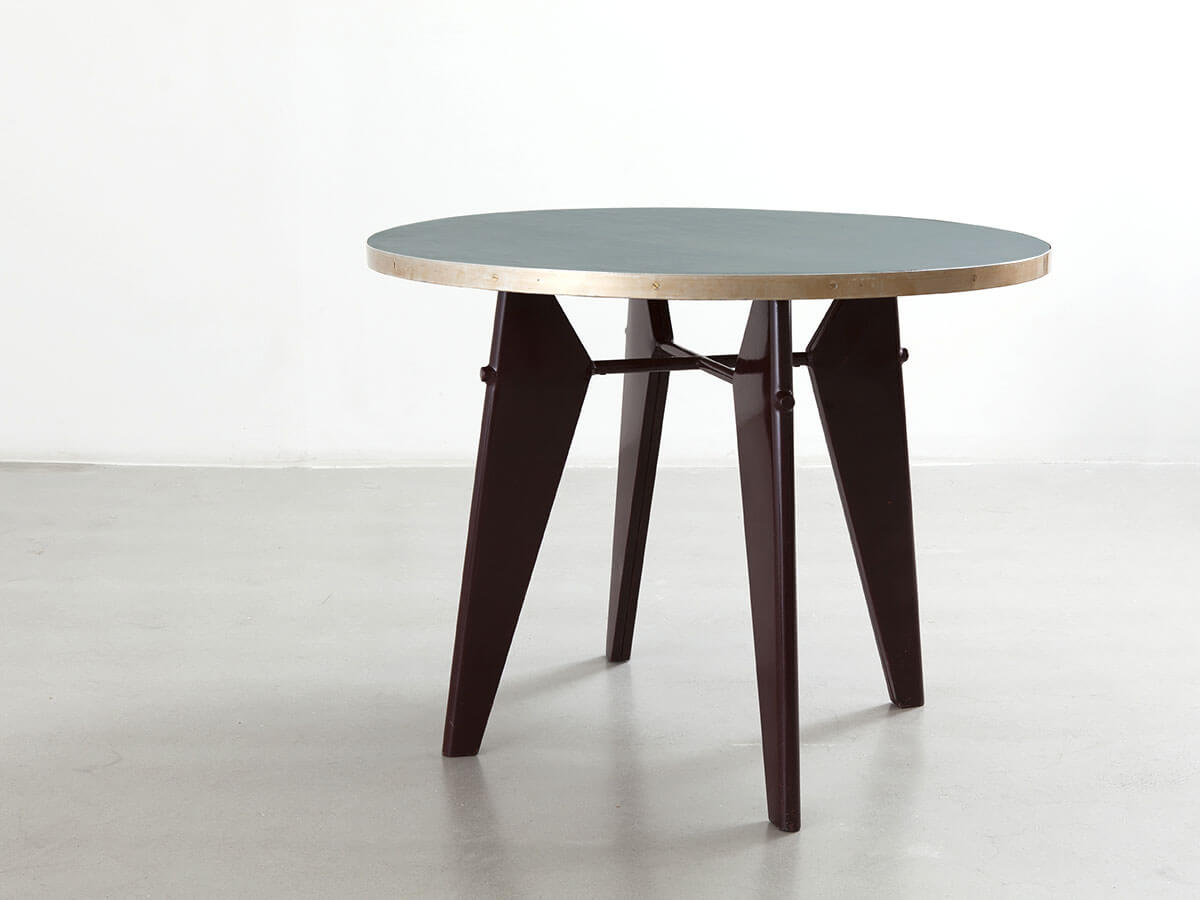
Jean Prouvé, ‘Demountable Guéridon Cafétéria’, 1950
COURTESY: Galerie Patrick Seguin
2. François Bauchet, ‘Azo-X’ large side table, 2021
For his Azo series of furniture, Bauchet, represented by Paris-based Galerie kreo, works with a smooth composite material made of concrete, sand and resin, dyed a rich red colour. Owing to its internal honeycomb structure, the material is very strong. He has played the variations on his rounded four pronged legs, an elongated “X”, supporting table tops of varieties of thicknesses. This latest iteration sees a single leg laid on its side, surmounted by a thick, compact table top. The fact that the leg is not fully covered gives the whole piece an improvisatory air that belies the mass of the material.
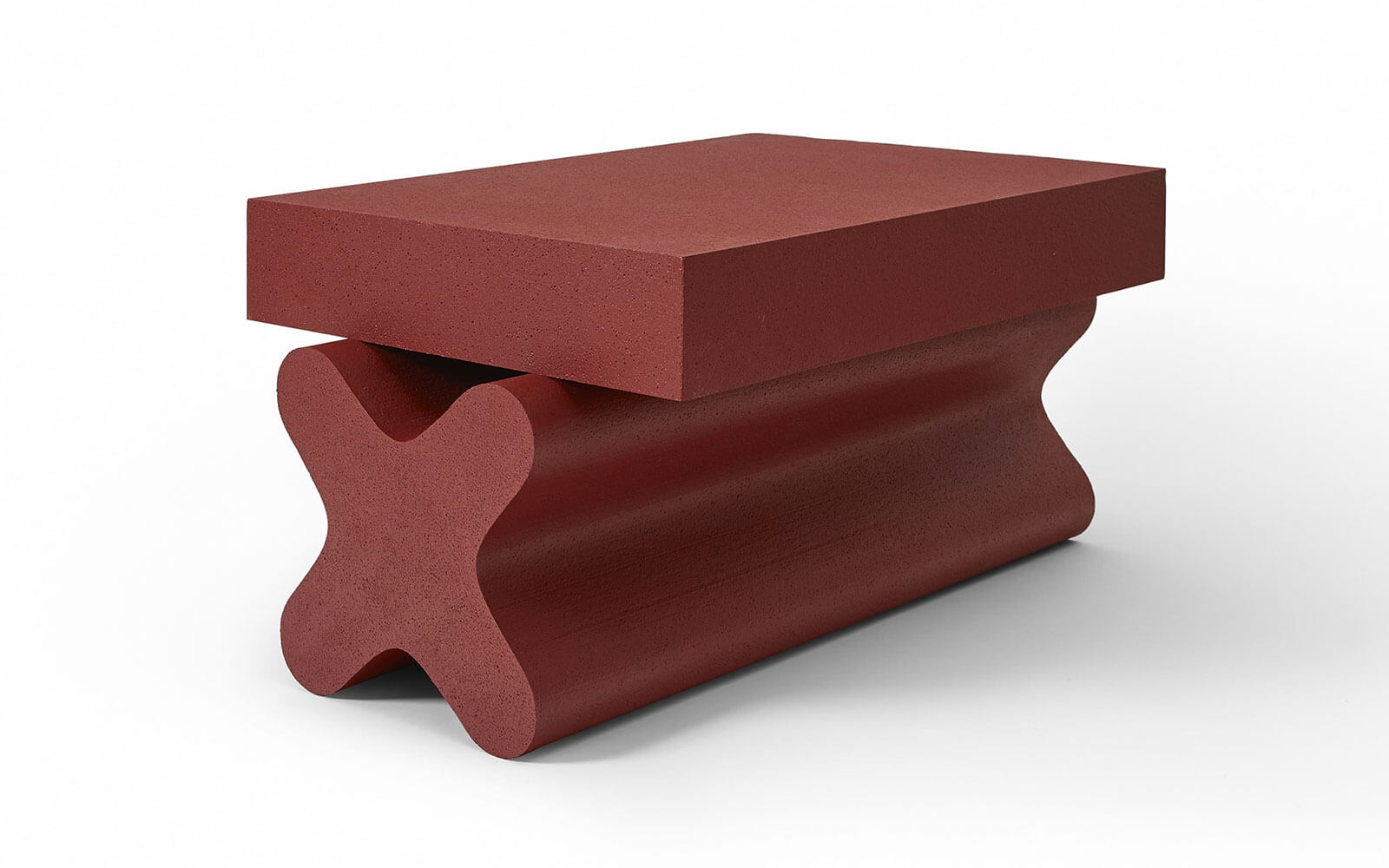
François Bauchet, ‘Azo-X’ large side table, 2021
COURTESY: Galerie kreo
3. Bernard Dubois and Isaac Reina, ‘Grande Table Pliable’, 2020
One of a series of limited pieces created jointly by Belgian architect Bernard Dubois and the Spanish/French designer Isaac Reina, this large folding table, composed of wood, combines rigorous formal simplicity and geometric ingenuity with a sumptuous, unadorned leather surface. The details are precise and the finish impeccable.

Bernard Dubois and Isaac Reina, ‘Grande Table Pliable’, 2020
COURTESY: MANIERA
4. Wendell Castle, ‘Dr Caligari’s Mistress’s Desk and Chair’, 1990
Made from oak, mahogany, Macassar ebony and mahogany veneer, aniline-dyed and acrylic-painted gesso and leather, this theatrical angular confection was inspired by Herman Warm’s set designs for the classic 1920 German Expressionist horror film The Cabinet of Dr. Caligari. The sharp forms and abrupt corners reflect the jagged anxiety of the film, distanced by time and irony, while the surface paint recalls the flashing blacks and whites of early celluloid.
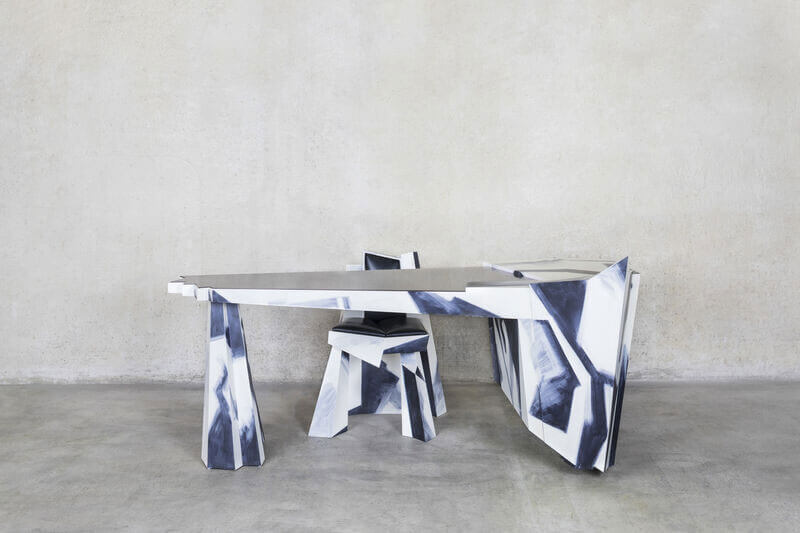
Wendell Castle, ‘Dr Caligari’s Mistress’s Desk and Chair’, 1990
COURTESY: Friedman Benda
5.Joaquim Tenreiro, ‘Cadeira de Três Pés’, 1947
The Belgian gallery owned by Stanislas Gokelaere & Céline Robinson specialises in ground-breaking mid-century design from across the world. Joaquim Tenreiro’s ‘Cadeira de Três Pés’ is an audacious design – an example of the pioneering Brazilian’s exuberant celebration of native woods and his daring craftsmanship.
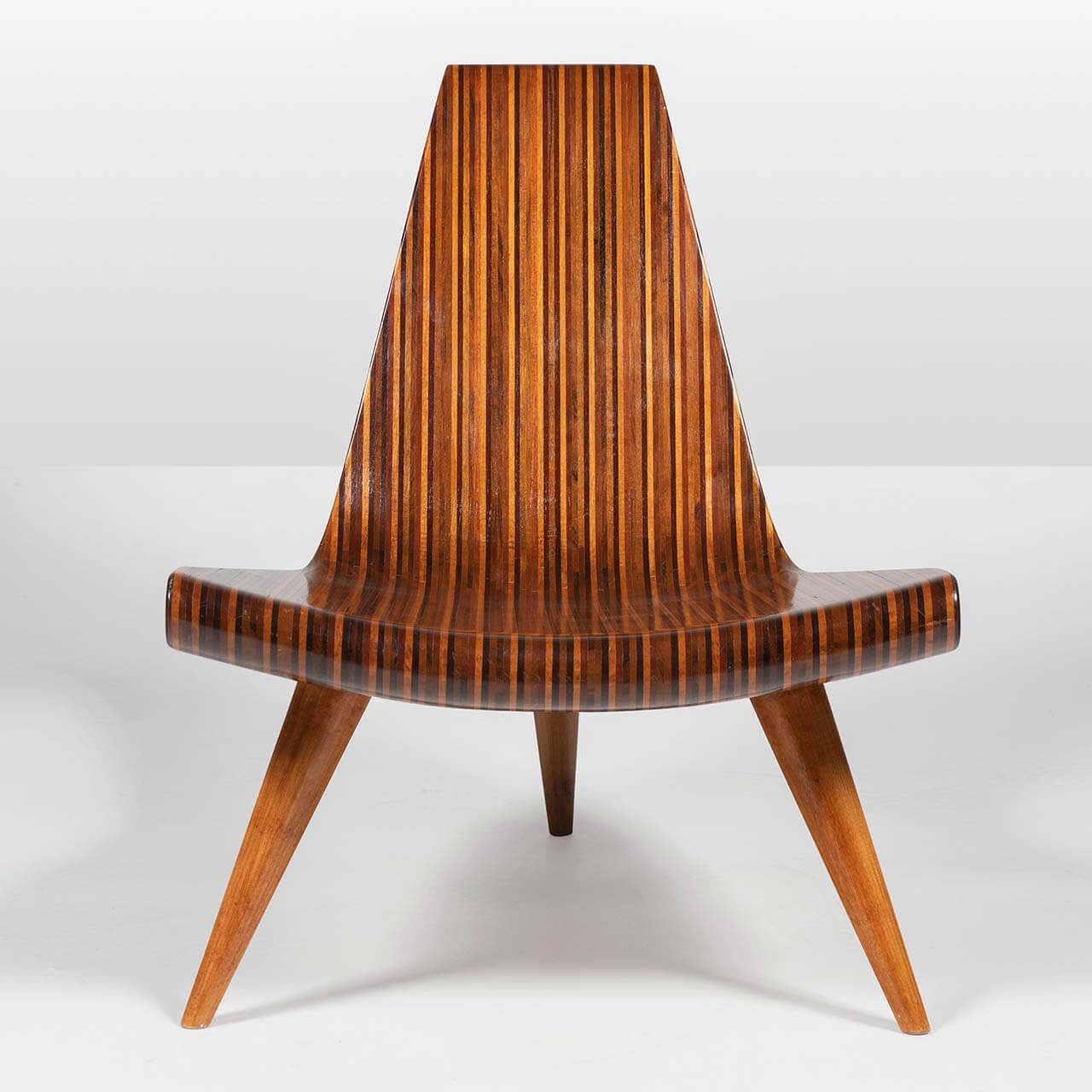
Joaquim Tenreiro, ‘Cadeira de Três Pés’, 1947
COURTESY: Gokelaere & Robinson
6. Joseph Walsh Studio, ‘Magnus II’ dining table, 2021
Part of an environment incorporating a free-standing sculpture and two three-legged ‘Enignum II Locus’ chairs, this unique table is a particularly graceful expression of Walsh’s long-honed techniques. It is made of ash, planed and then layered, with long curvaceous strips schooled into a free-flowing rhythmic shape to provide the base to the irregular oval table top, the whole piece balanced on a curve. Walsh works with nature to express its vigour and its beauty: a river runs through this piece, in the grain of the table top and in the twists and turns of the base.
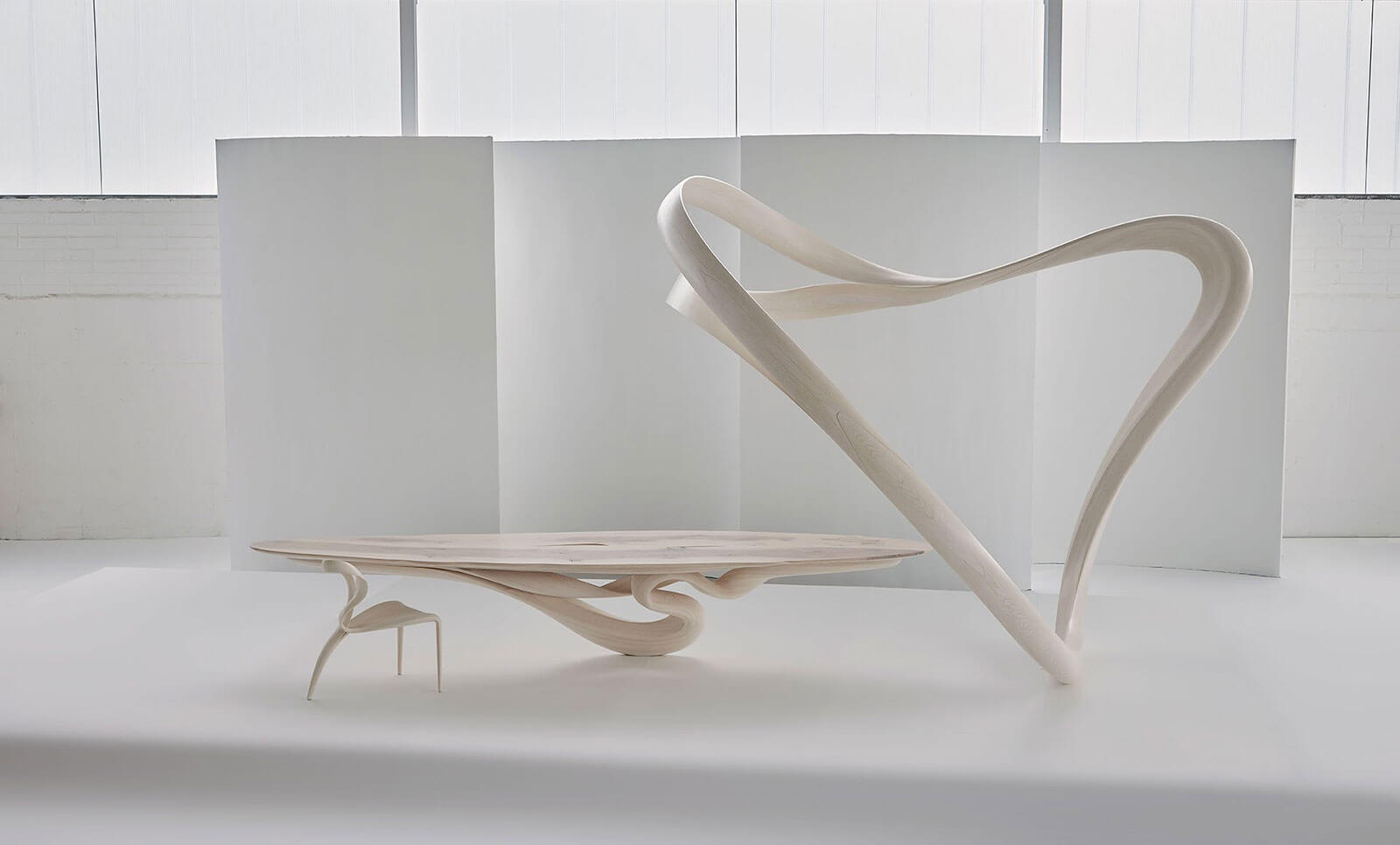
Joseph Walsh Studio, ‘Magnus II’ dining table, 2021
COURTESY: Joseph Walsh Studio
7. Louis Comfort, ‘Tiffany Fire Guard’, circa 1905
Guided by his own judgment, unbound by dates or specific traditions, Geoffrey Diner Gallery is based in Washington DC. This one-off wrought iron and ‘chain mail’ fire screen, made from segments of richly coloured favrile glass, was originally commissioned for the Rochester home of architect and stage designer Claude Fayette Bragdon. It is a supreme example of the glass manufacturer’s bold historicising.
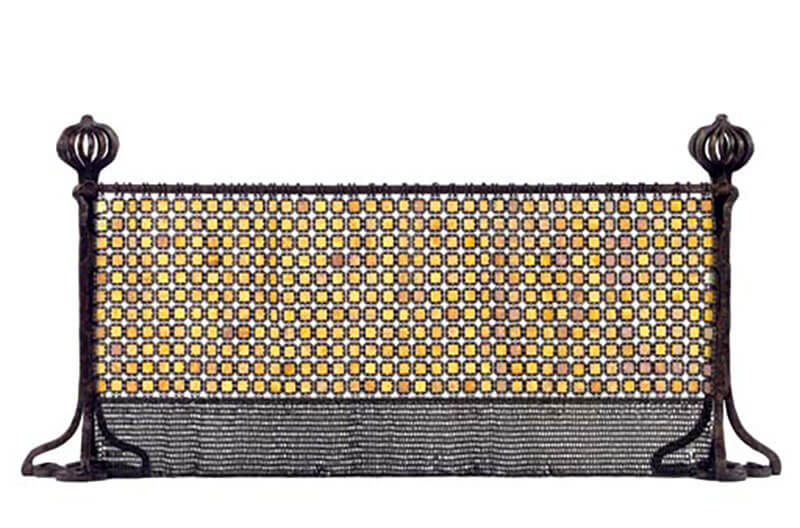
Louis Comfort, ‘Tiffany Fire Guard’, circa 1905
COURTESY: Geoffrey Diner Gallery
8. Inês Schertel, ‘Knotted Tapestry’, 2021
Schertel lives and works on a farm in São Francisco de Paula, in southern Brazil, where she crafts furniture, accessories and even lighting from the wool she gathers from the farm’s three hundred sheep. This hanging is a particularly spectacular example of creative ambition working in tandem with the natural properties of a raw material.
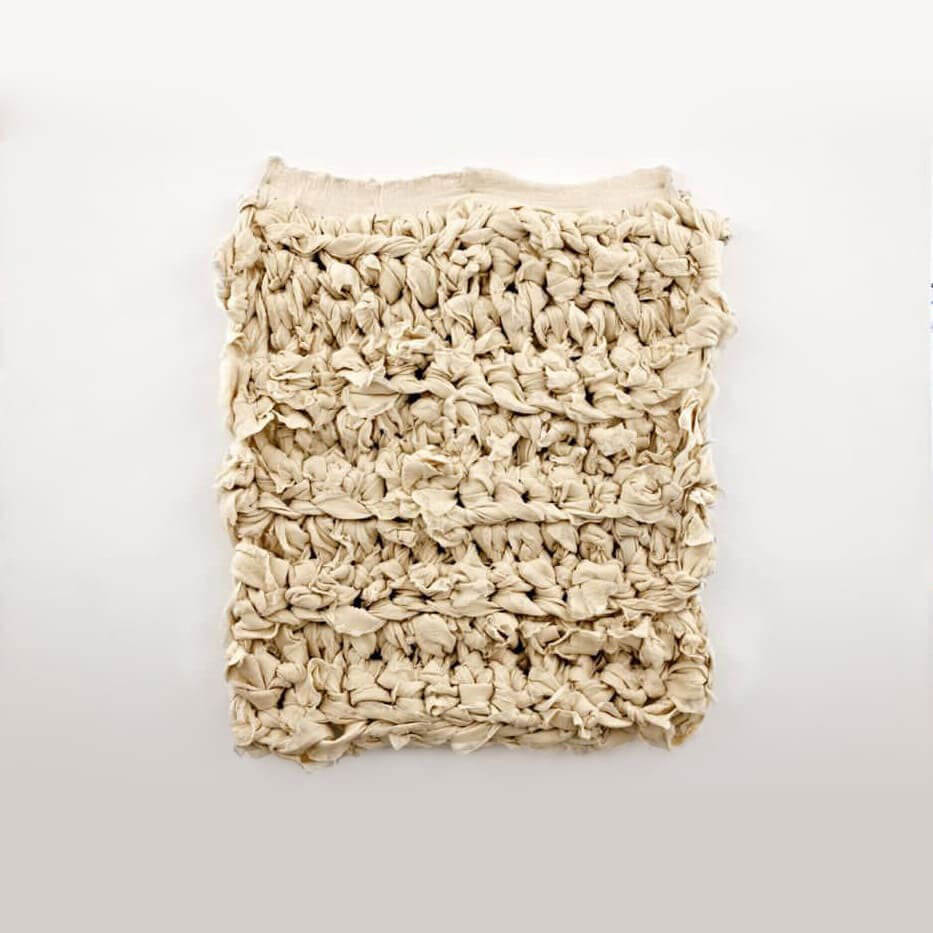
Inês Schertel, ‘Knotted Tapestry’, 2021
COURTESY: Mercado Moderno
9. Carlo Mollino, ‘Desk’ designed for Lattes Publishing House, Turin, 1954
This desk reveals the legendary Italian designer Carlo Mollino’s ability to reimagine even the most humble office furniture. This overtly engineered desk with its floating chest of drawers to one side combines function with a joyful surrealist element. Italian dealer, Rossella Colombari, celebrating her gallery’s fortieth anniversary, sold the desk to a collector almost four decades ago – and has just reacquired it.

Carlo Mollino, ‘Desk’ designed for Lattes Publishing House, Turin, 1954
COURTESY: Galleria Rossella Colombari
10. Aldo Bakker, ‘Console/Table Green Urushi’, 2017
This sleek console table, by the great Dutch designer, creates an art work from contrasts: between the plastic foam of the console’s body and the multiple layers of rich green lacquer which form its skin; between the apparent simplicity of the form and the pleasingly off-kilter geometries. The concept is simple, but the form is full and rounded, defying the rectilinear rigours of minimalism.
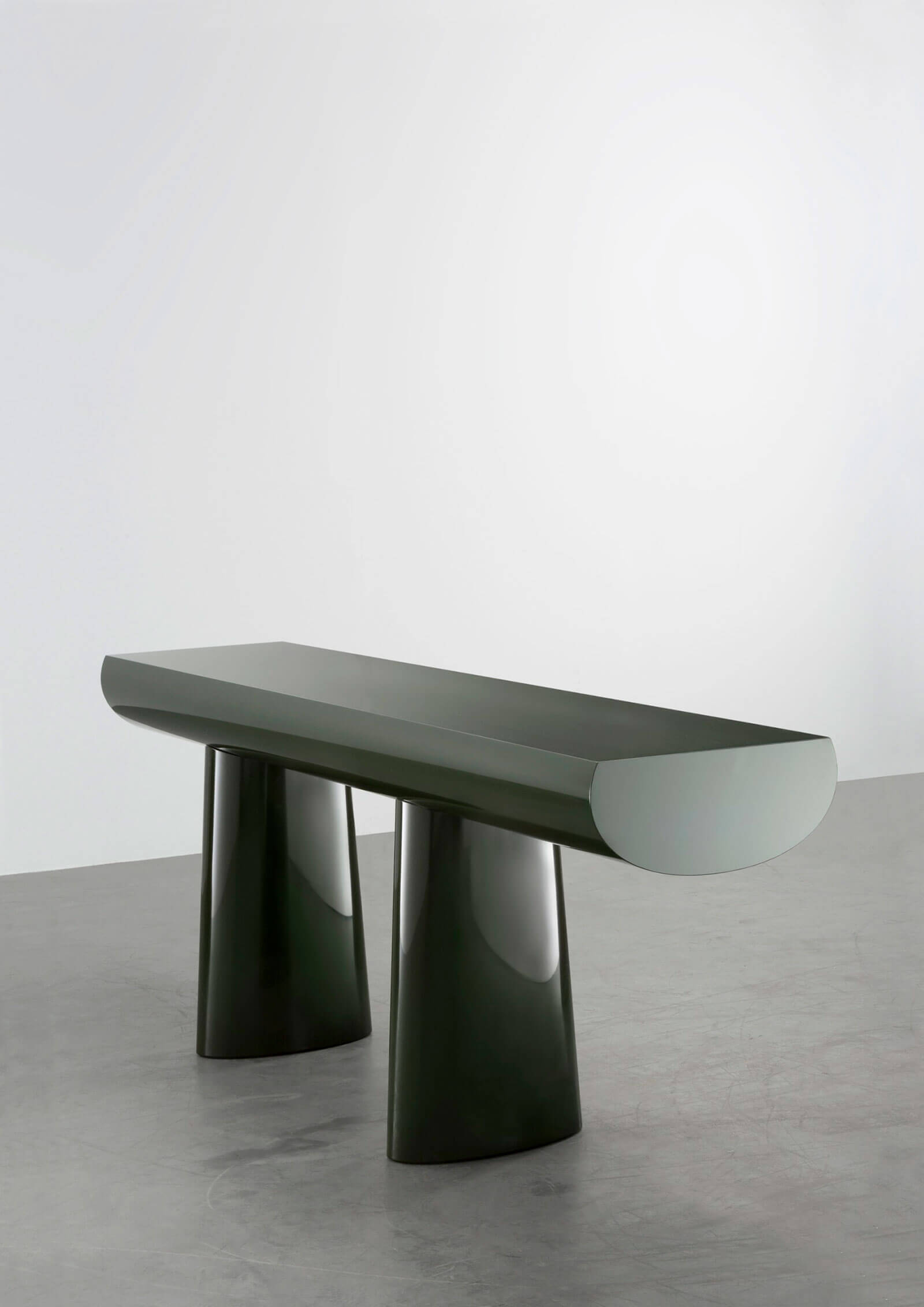
Aldo Bakker, ‘Console/Table Green Urushi’, 2017
COURTESY: Carpenters Workshop Gallery
‘From the Austere to the Flamboyant’, The Design Edit’s virtual tour.




